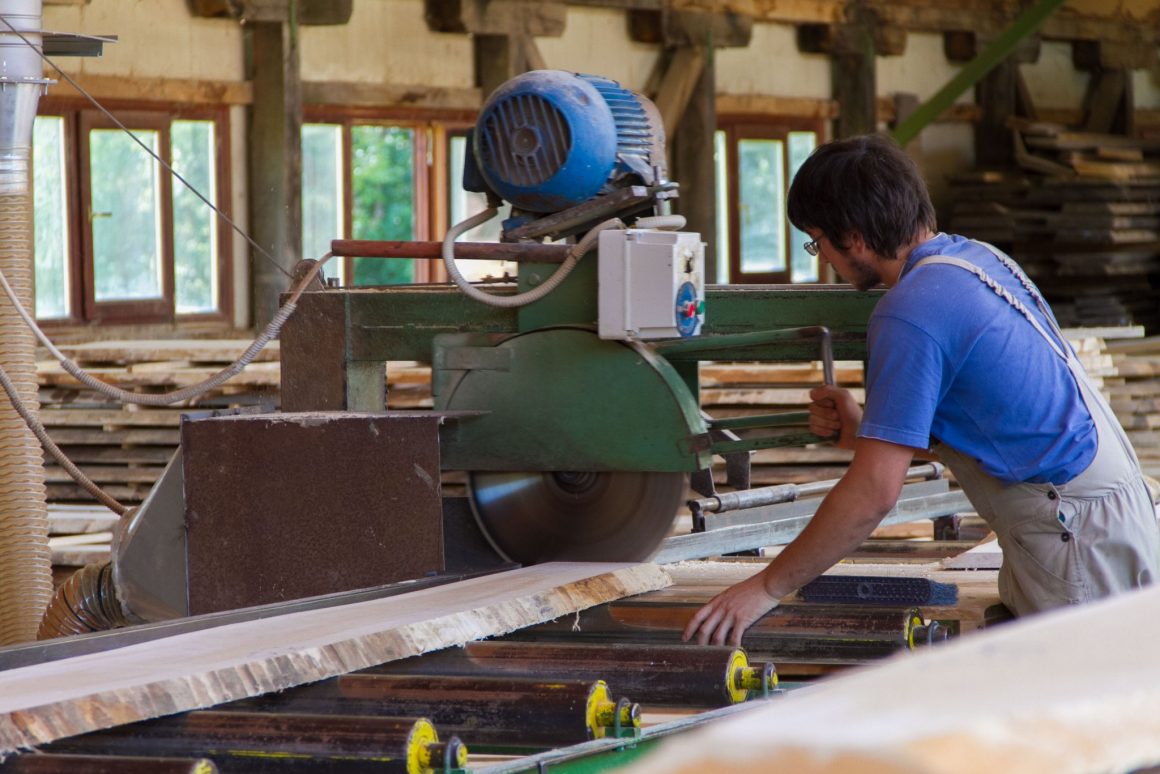As part of its grant program, USAID Diaspora Invest supports wood processing companies. In order to increase interest in the wood industry for our portal, we analyzed this sector with an emphasis on the industry “Processing of wood and cork products, except furniture; manufacture of articles of straw and plaiting materials “.
BiH has enormous raw material resources, in terms of wood processing, as the basis for future development. However, the problem is that business activities within this sector in our country are mainly based on the export of raw materials. Our focus should be shifted from the export of our resources to final processing that brings more added value, which means more income and possibilities for future investments in new machines and technologies and finally, higher employment. Despite the huge number of unemployed in BiH, the companies in the wood processing industry have a hard time finding the workers. The situation is similar when it comes to those that are supposed to manage the operations because of the deficit of wood technology engineers. The problem with most sectors in BiH, including wood processing, is a lack of cooperation with educational institutions which would have a great impact on its growth and development.
Referring to data from LRC BIS – Business Intelligence Systema, we made an overview of one more industrial sector intending to motivate the investors to invest in it.
Number of companies in the last three years
In 2016, there were 1065 registered wood processing companies, while in 2018 that number increased by 33 companies and now it counts 1098 companies.

Types of companies
From listed companies, 59.4% companies have an income of half of million BAM, 36.2% of them have up to BAM 5 million and 4.5% of them have an income of more than BAM 5 million.

Number of companies in the last three years
In 2016, there were 1065 registered wood processing companies, while in 2018 that number increased by 33 companies and now it counts 1098 companies.
Types of companies
From listed companies, 59.4% companies have an income of half of million BAM, 36.2% of them have up to BAM 5 million and 4.5% of them have an income of more than BAM 5 million.

Number of employees and average salaries
The number of employees in the wood processing industry experienced significant growth during recent years. The growth was most evident in 2017 when there was an increase of 1208 employees. In 2018, the growth was not as intensive and increased only by 391 employees.
The average gross monthly salary in companies in the wood processing industry is BAM 943.00 or EUR 482.00. This means that employees in the wood processing industry are paid BAM 6 by the hour or EUR 3 by the hour.
| Labor costs | BAM | EUR |
| Total labor costs | 173,101,942 | 88,505,618 |
| Number of employees | 15,304 | |
| Average annual gross salary per employee | 11,311 | 5,783 |
| Average monthly gross salary per employee | 943 | 482 |
| Daily wage per employee | 45 | 23 |
| Average hourly wage | 6 | 3 |
Monthly income per employee is BAM 6,981.00 or EUR 3,569.00. The average income per hour per employee is BAM 42 or EUR 21.
| Types of income | BAM | EUR |
| Annual income per employee | 83,767 | 42,829 |
| Monthly income per employee | 6,981 | 3,569 |
| Daily income per employee | 332 | 170 |
| Average hourly income per employee | 42 | 21 |
INCOME AND EXPORT
Total sales income in the last three years experienced stable and constant growth. Income from sales that was a billion and BAM 94 million in 2016, increased in 2018 to billion and BAM 281 million, which represents a significant growth of almost 16%.
Income from exports increased by 22.73% in 2017 compared to 2016. But in 2018, it declined by 20.1%.

Top 20 companies by income

Top 10 companies share in total income

Total profit
Companies registered in the wood processing sector in 2018 together achieved a total profit of BAM 45.73 million which represents a decline of 30% compared to a total profit in 2016 when that number equalled BAM 62.25 million.

Top 10 companies by operational profit


